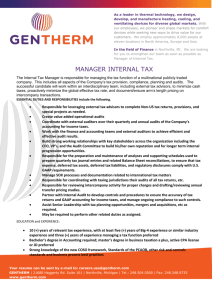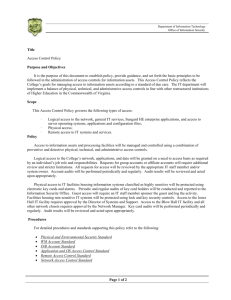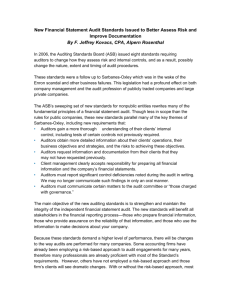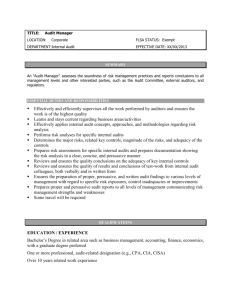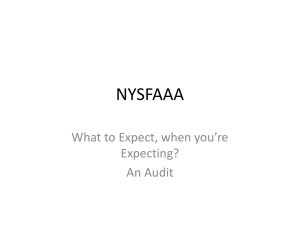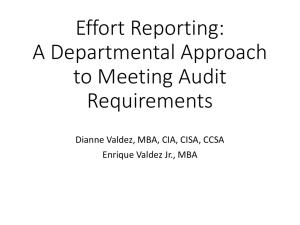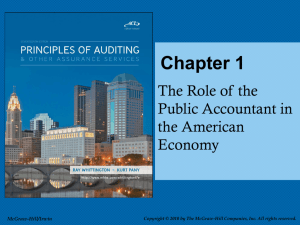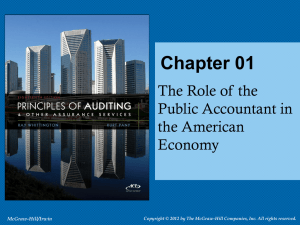Operational Auditing: Adding Value to Organizations
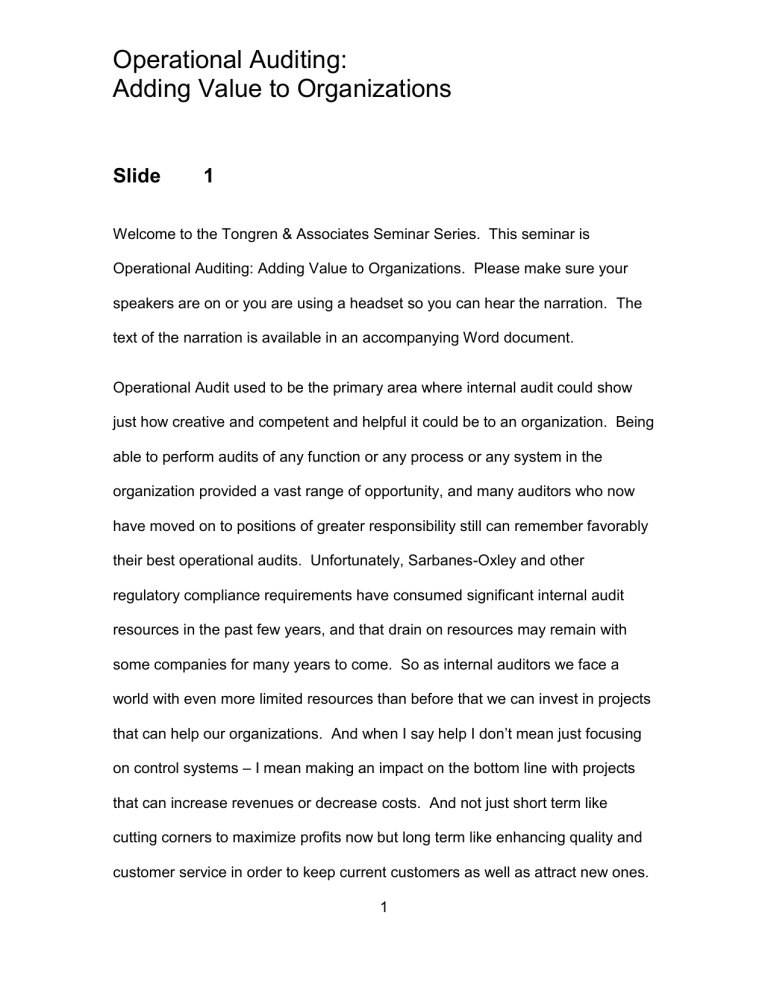
Operational Auditing:
Adding Value to Organizations
Slide 1
Welcome to the Tongren & Associates Seminar Series. This seminar is
Operational Auditing: Adding Value to Organizations. Please make sure your speakers are on or you are using a headset so you can hear the narration. The text of the narration is available in an accompanying Word document.
Operational Audit used to be the primary area where internal audit could show just how creative and competent and helpful it could be to an organization. Being able to perform audits of any function or any process or any system in the organization provided a vast range of opportunity, and many auditors who now have moved on to positions of greater responsibility still can remember favorably their best operational audits. Unfortunately, Sarbanes-Oxley and other regulatory compliance requirements have consumed significant internal audit resources in the past few years, and that drain on resources may remain with some companies for many years to come. So as internal auditors we face a world with even more limited resources than before that we can invest in projects that can help our organizations. And when I say help I don’t mean just focusing on control systems – I mean making an impact on the bottom line with projects that can increase revenues or decrease costs. And not just short term like cutting corners to maximize profits now but long term like enhancing quality and customer service in order to keep current customers as well as attract new ones.
1
This seminar is about how we as internal auditors can add value to our organizations, value that everyone in the organization can understand and appreciate. I can almost guarantee that if you adopt a value added approach for your operational audit efforts, after a few tremendously successful audits when you walk down the hall you’ll overhear people saying “Those are the auditors,” and you’ll hear pride and admiration in their voices rather than scorn and fear.
Internal Audit has a wonderful opportunity to show the world that our expertise and capability is much larger than just compliance checking and internal control testing …
Slide 2
Where’s the Money!
“Where’s the Money” is the first Operational Audit Model I’d like to discuss.
Organizations are all about money. We invest money to make money, we make products so we can sell products so we can make money
– and accounting is the language of business because we communicate in money terms. So it is only logical that the first place we should look if we are trying to help our organizations become more valuable is to help them make and keep more money! So where do we look?
The first place to look is where our organization stores or spends or receives money – since those are places where we can lose, spend too much, or not get all the money we should have. Now most financial systems are pretty well
2
secured and controlled by now, so this area requires more than a cursory look to find problems. In this area it is best to have experience and credentials, or at least expert guidance. You have entered the world of the Fraud Hunters!
The second area is to look beyond money as money, and consider money equivalents. These include inventory and supplies and fixed assets and labor, etc. or in short everything we spend money on. Here we get more into operational areas such as manufacturing and service providers, where value is created for the organization. Since I began my internal audit career in manufacturing most of my most memorable operational audits had to do with inactive and obsolete and excess inventory, bill of materials, storage and shipping, and quality. For example, at one location we reviewed the bill of materials for a room air conditioner which was the highest volume product in the plant. We found the compressor used in the unit had a design life of 20 years while the other parts had a design life of 7 years. The warranty on the unit was for 3 years. Further investigation revealed the design had been done hurriedly in order to get the product to market, and the only compressor available at the time was for a premium unit. The original bill of materials had never been reviewed.
Using a compressor that was designed specifically for the unit resulted in lowering the cost by half thereby doubling the margin. The general manager of that division was always very g lad to see us after that audit, although he wasn’t very happy with his engineering staff. But after that audit, the corporate controller sent directives out across the company for all locations to review their product’s bill of materials to make sure component design lives were consistent.
3
That brings us to the third perspective for Where’s The Money – and that is to consider any opportunity to increase revenue or decrease expense. That reminds me of a story my father told me many years ago. He told me how John
D Rockefeller was visiting a plant that produced canned milk. ON the production line after the cans were filled was a station that sealed the fill hole using drops of solder. Rockefeller asked if the hole could be sealed using one less drop of solder. The operator told him that it probably would work ok that way. They changed the specifications and saved one drop of solder on each of the cans they produced from then on. I don’t recall the exact figure of cost savings but it seemed really huge to me as a small boy! The point is that small savings at the individual level can amount to very large savings over time.
Where’s the Money is a state of mind, an orientation that all internal auditors should develop and nurture. There are opportunities in every audit to improve processes to increase revenue or decrease costs. Always being aware of the possibility is the first step.
4
Slide 3
And now it is your turn. Thinking about your own organization, think about areas where you would expect you could identify cost savings or ways to increase revenue. Sit back in your chair and let your mind soar! Visualize production lines or service centers; recall past audits where you had some indications that things weren’t quite right, think about operational audits you would really like to do that somehow never make it through the annual planning process.
And after you spend some time letting your creative processes do their thing, identify specific audits you could do that would result in significant revenue increase or cost saving or cash recovery.
You should be able to come up with a list of at least ten audits that have never been performed at your organization before. And audits like accounts payable and purchasing don’t count…
Slide 4
This slide lists the important principles from “Total Process Management” that we as auditors need to understand about process improvement. They are:
• Eliminate Bureaucracy
• Organize Around Results
•
Be Done In One
5
• Simplify The Process
• Reduce The Cycle Time
• Dissolve Boundaries
We
’ll discuss each of these in detail.
6
